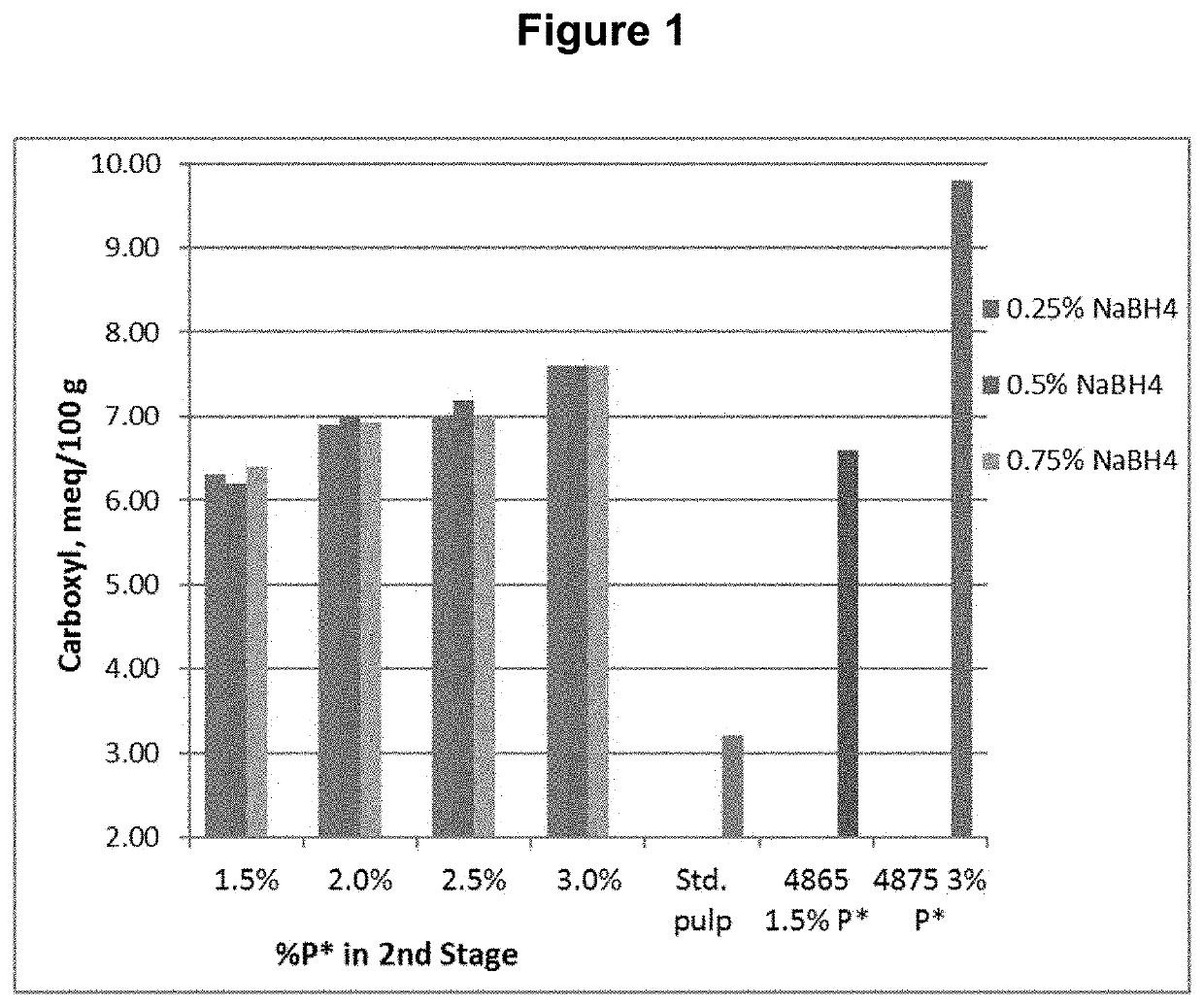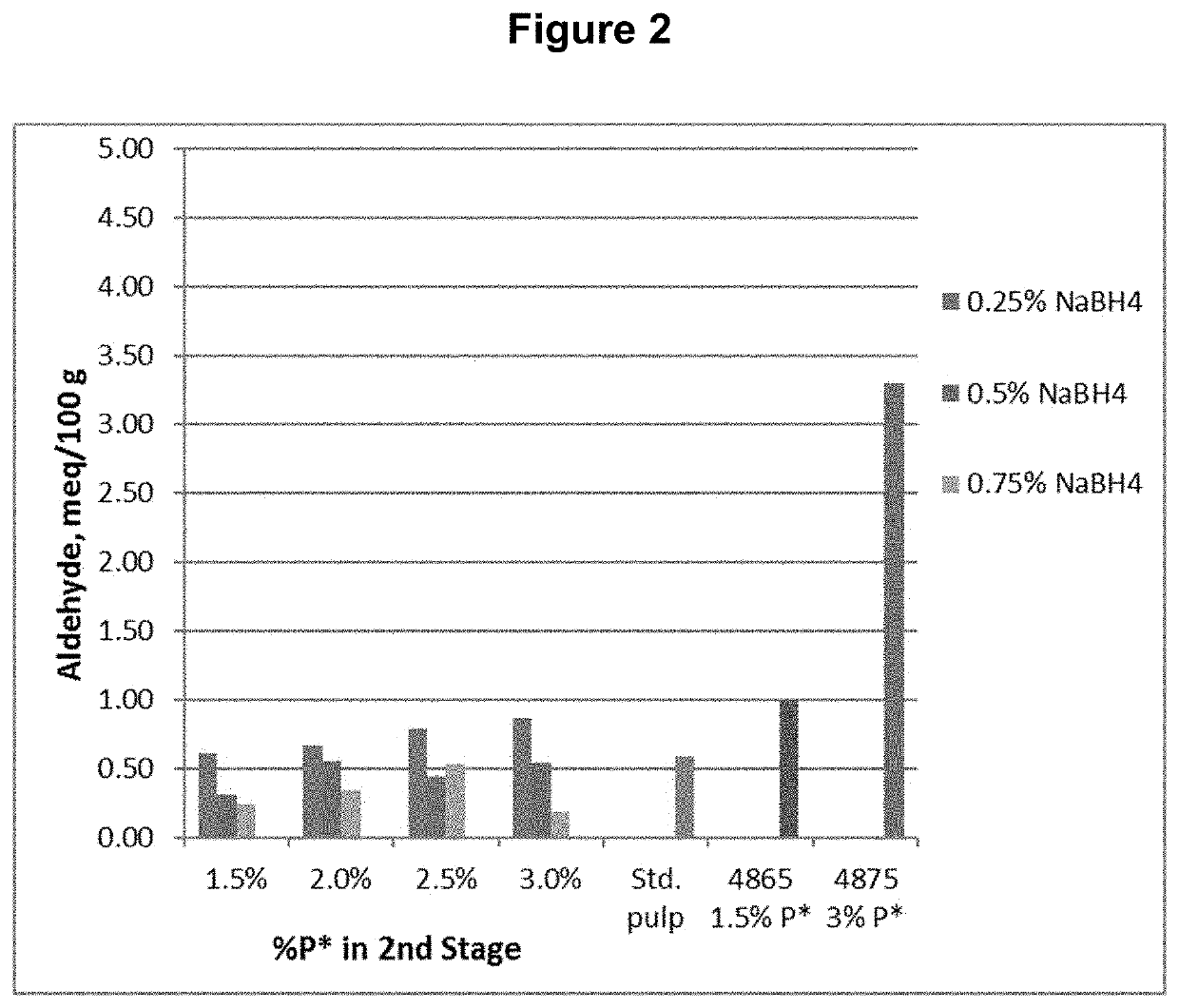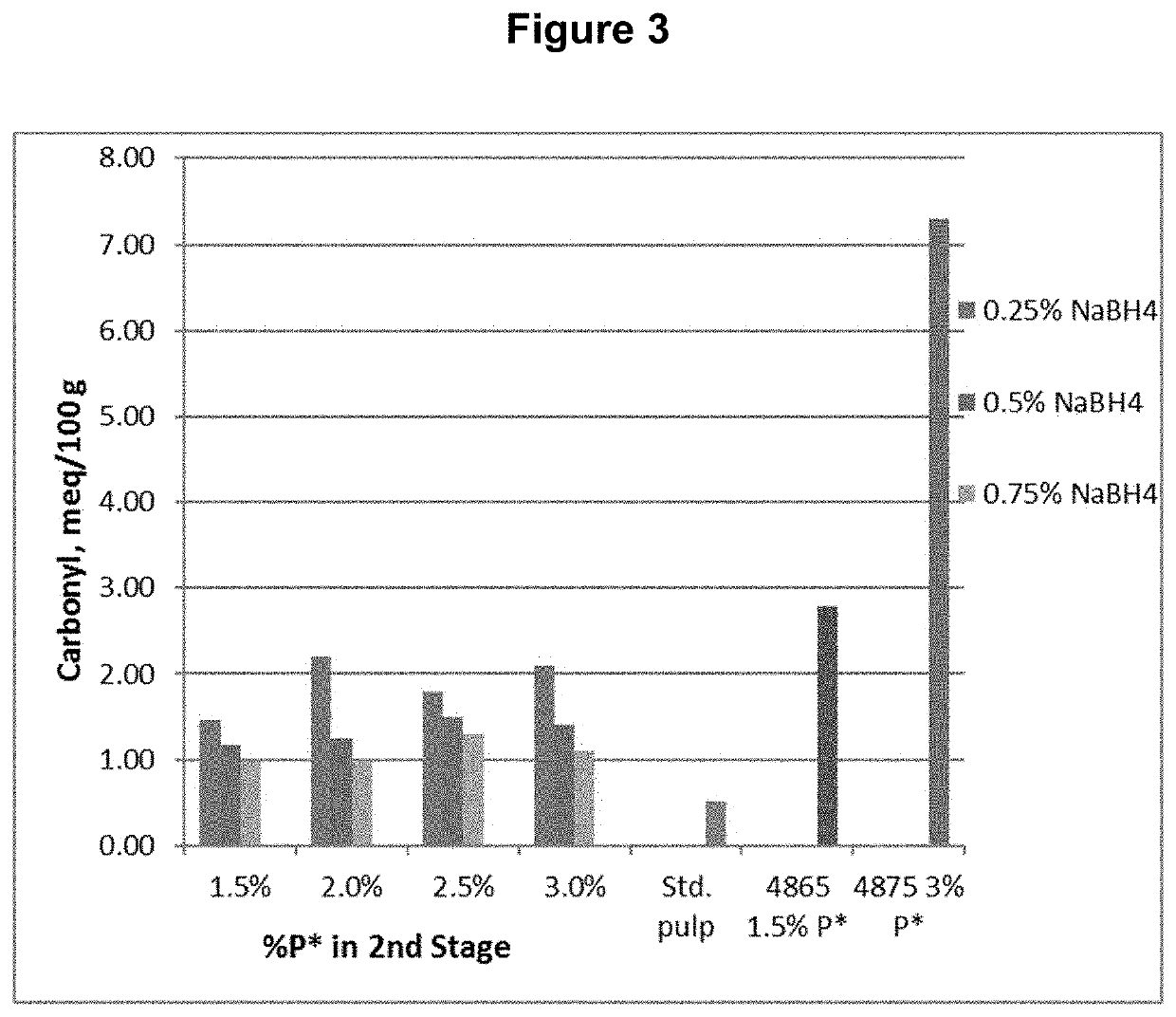Open chain modified cellulosic pulps and methods of making and using the same
- Summary
- Abstract
- Description
- Claims
- Application Information
AI Technical Summary
Benefits of technology
Problems solved by technology
Method used
Image
Examples
example 1
[0085]A southern softwood kraft, oxygen delignified pulp was collected from the first chlorine dioxide (D0) washer of a five-stage bleach plant and used for testing.
[0086]The D0 pulp was further treated with P*D(c / a)BD2 bleaching stages, where P* is an acidic catalyzed peroxide oxidation stage, D(c / a) is a chlorine dioxide stage with hydrogen peroxide added to enhance the production of chlorous acid, B is a sodium borohydride stage, and D2 is a final chlorine dioxide stage. The P* stage was done with four different levels of applied H2O2 and Fe+2 and each was followed by a D(c / a) stage. Each of these pulps was then treated with one of three levels of sodium borohydride, followed by the final D2 stage with a set application of CIO2. The sodium borohydride was supplied as a commercial solution, Boromet 10®, from Montgomery Chemicals, Conshohocken, Pa. The basic process conditions and chemical applications are shown in Table 1.
TABLE 1Process Conditions for D0P*D(c / a)BD2 SequenceChemica...
example 2
[0089]The same D0 pulp from Example 1 was used for testing a DP*D(c / a)P*D(c / a)-B sequence, where a sodium borohydride treatment was done following the final D(c / a) bleaching stage. Each of the D(c / a) stages had H2O2 added to enhance chlorous acid production. The sodium borohydride “B” stage treatment was done at three different levels. The process conditions and chemical applications are shown in Table 2.
TABLE 2Process Conditions for DP*D(c / a)P*D(c / a)B SequenceChemicalsTimeTemp.H2O2ClO2NaBH4Fe+2Stagemin° C.(%)(%)(%)(ppm)D0P*90801.5n / an / a150D1(C / A)150801.21.6n / an / aP*90801.5n / an / a150D2(C / A)150800.80.8n / an / aB4550n / an / a0.10n / aor B4550n / an / a0.25n / aor B4550n / an / a0.45n / a
[0090]The final bleached pulps were tested for brightness, viscosity, and functional groups, including carboxyls, aldehydes, and carbonyls (calculated from copper no.). The functional group contents are shown in FIGS. 6, 7, and 8 for carboxyl, aldehyde, and carbonyl content respectively. The viscosity and brightness are sho...
PUM
| Property | Measurement | Unit |
|---|---|---|
| Fraction | aaaaa | aaaaa |
| Fraction | aaaaa | aaaaa |
| Fraction | aaaaa | aaaaa |
Abstract
Description
Claims
Application Information
 Login to View More
Login to View More - R&D
- Intellectual Property
- Life Sciences
- Materials
- Tech Scout
- Unparalleled Data Quality
- Higher Quality Content
- 60% Fewer Hallucinations
Browse by: Latest US Patents, China's latest patents, Technical Efficacy Thesaurus, Application Domain, Technology Topic, Popular Technical Reports.
© 2025 PatSnap. All rights reserved.Legal|Privacy policy|Modern Slavery Act Transparency Statement|Sitemap|About US| Contact US: help@patsnap.com



